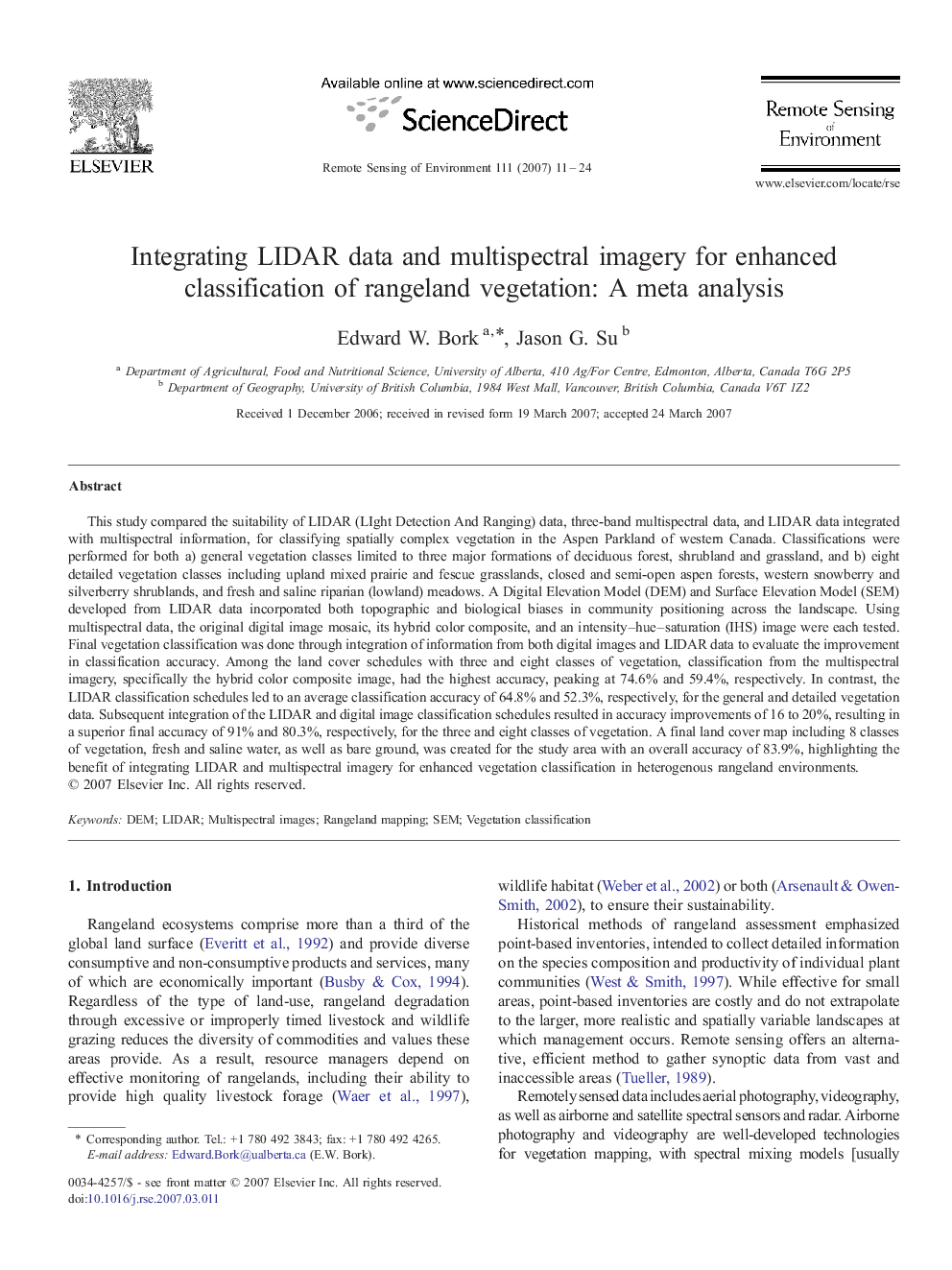| کد مقاله | کد نشریه | سال انتشار | مقاله انگلیسی | نسخه تمام متن |
|---|---|---|---|---|
| 4460558 | 1621336 | 2007 | 14 صفحه PDF | دانلود رایگان |

This study compared the suitability of LIDAR (LIght Detection And Ranging) data, three-band multispectral data, and LIDAR data integrated with multispectral information, for classifying spatially complex vegetation in the Aspen Parkland of western Canada. Classifications were performed for both a) general vegetation classes limited to three major formations of deciduous forest, shrubland and grassland, and b) eight detailed vegetation classes including upland mixed prairie and fescue grasslands, closed and semi-open aspen forests, western snowberry and silverberry shrublands, and fresh and saline riparian (lowland) meadows. A Digital Elevation Model (DEM) and Surface Elevation Model (SEM) developed from LIDAR data incorporated both topographic and biological biases in community positioning across the landscape. Using multispectral data, the original digital image mosaic, its hybrid color composite, and an intensity–hue–saturation (IHS) image were each tested. Final vegetation classification was done through integration of information from both digital images and LIDAR data to evaluate the improvement in classification accuracy. Among the land cover schedules with three and eight classes of vegetation, classification from the multispectral imagery, specifically the hybrid color composite image, had the highest accuracy, peaking at 74.6% and 59.4%, respectively. In contrast, the LIDAR classification schedules led to an average classification accuracy of 64.8% and 52.3%, respectively, for the general and detailed vegetation data. Subsequent integration of the LIDAR and digital image classification schedules resulted in accuracy improvements of 16 to 20%, resulting in a superior final accuracy of 91% and 80.3%, respectively, for the three and eight classes of vegetation. A final land cover map including 8 classes of vegetation, fresh and saline water, as well as bare ground, was created for the study area with an overall accuracy of 83.9%, highlighting the benefit of integrating LIDAR and multispectral imagery for enhanced vegetation classification in heterogenous rangeland environments.
Journal: Remote Sensing of Environment - Volume 111, Issue 1, 15 November 2007, Pages 11–24